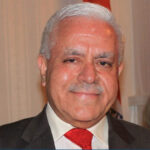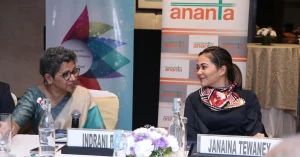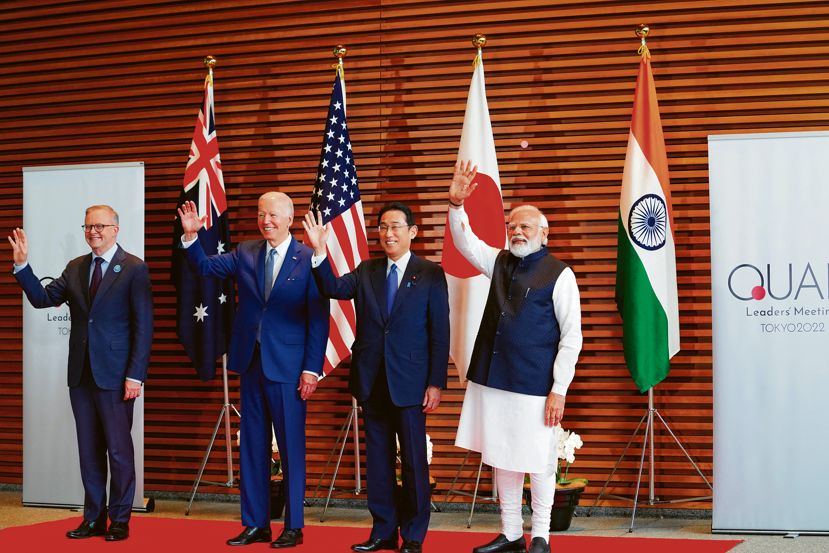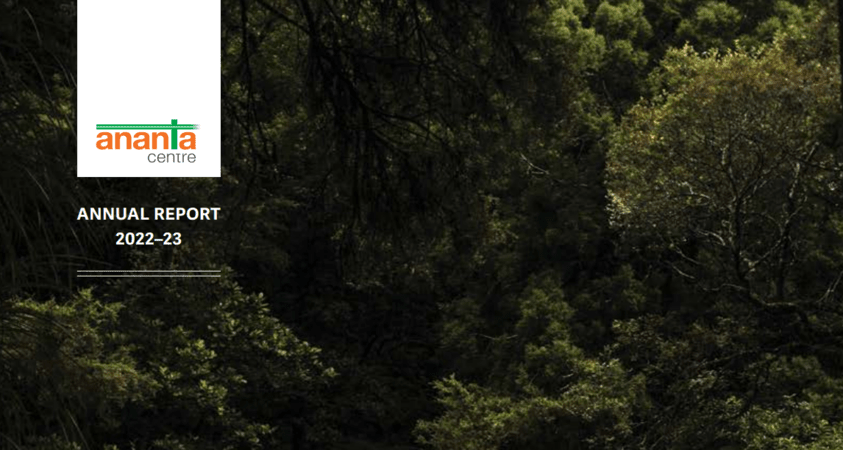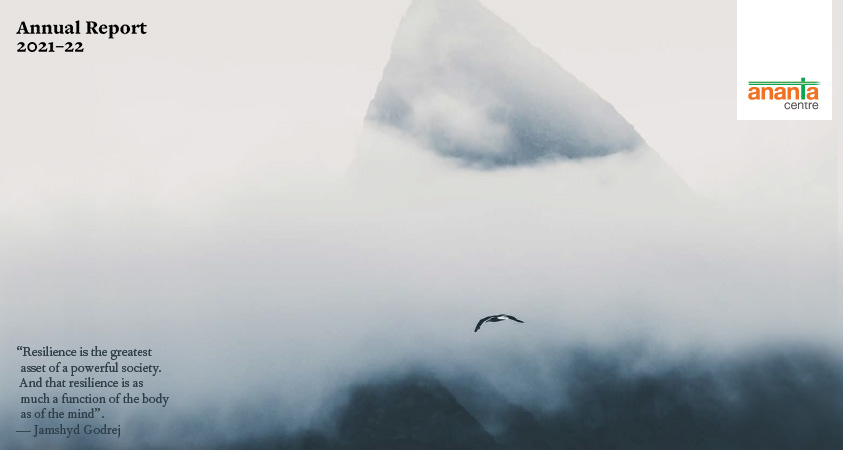HIGHLIGHTS
● Political Developments
● Economic Developments
● India-Central Asia Relations
Political Developments
Russia pledged to provide military support to Central Asia allies as security deteriorated in neighboring Afghanistan. Russian Defense Minister Sergei Shoigu voiced Moscow’s readiness to bolster Tajikistan’s military with weapons, equipment, and training. Shoigu made this statement at a meeting of Defense Ministers of Shanghai Cooperation Organization (SCO) member nations in Tajikistan’s capital Dushanbe. Shoigu further said that Russia was eager to strengthen the combat readiness of its military bases in Tajikistan and Kyrgyzstan.
A wing of Russian Su-25 ground attack aircraft was redeployed from Russia’s Kant integrated airbase in Kyrgyzstan to Tajikistan to participate in the trilateral exercise of Russian, Uzbek and Tajik troops at the Kharb-Maidon training ground, 20 km from Afghanistan. During the joint drills, the crews of Su-25 close-support aircraft hunted for a notional enemy’s camouflaged bases, delivered missile and bomb strikes against targets and practiced the elements of dodging the fire by the enemy’s man-portable air defense systems.The Russian military contingent in the drills was mostly comprised of units of Russia’s 201st military base stationed in Tajikistan. The war games involved 2,500 Russian, Tajik and Uzbek troops and about 500 military vehicles. The troops practiced repelling intrusions by armed gangs and eliminating radical terrorist groups.
These joint military drills represent a new era of Russian-Central Asian cooperation. They demonstrated that Tajikistan and Uzbekistan trust each other, at least when it comes to jointly thwarting Afghan-emanating security threats, and that Russia is contributing to ensure that their newfound multilateral military cooperation in the face of these challenges is fruitful. Uzbekistan’s expanded military ties with Russia also symbolize the strength of their strategic partnership, which includes Tashkent’s observer status in the Eurasian Economic Union since December 2020. The missing piece of Central Asian integration has always been the meaningful rapprochement between Tajikistan and Uzbekistan while Russian-Central Asian integration has required an external impetus. Both have now been achieved due to President Mirziyoyev’s pragmatic regional policies and Russia’s role in leading its Central Asian allies’ efforts’ to confront shared security threats from Afghanistan.
These drills in Tajikistan followed the earlier exercise in Uzbekistan that involved 1,500 Russian and Uzbek troops and 200 military vehicles. As part of the maneuvers, four Russian Tu-22M3 long-range bombers flew from their base in western Russia to strike mock militant camps at the Termez firing range in Uzbekistan near the border with Afghanistan.
Against the backdrop of the US troop withdrawal from Afghanistan, and the rapid take-over of the country by the Taliban, Russia held military drills with Turkmenistan for 10 days.
Tajikistan also held its largest military readiness drills since the dissolution of the Soviet Union, involving around 100,000 servicemen, 130,000 reserve troops and 1,000 armored vehicles. Tajik military recruitment officers have reportedly been touring the country, drawing up lists of young people who could be called up as war-time reservists.
Central Asia’s economic and military vulnerability to growing security challenges amid Taliban’s control over the whole of Afghanistan has once again turned the region into an arena of geopolitical rivalry between world powers, the US, Russia and China. By exploiting the Afghan crisis, Moscow is increasing its military influence in the wider Central Asian region, its ‘southern underbelly,’ a term that underscores the sense of vulnerability it feels along its southern border. Putin’s primary goal at this stage is to prevent the US armed forces from gaining a foothold in Central Asia again after their withdrawal from Afghanistan. For Moscow any forays by Washington in its ‘southern underbelly’, especially in the military field, represent a potential threat that could reduce its influence in the post-Soviet space.
Recently the Biden administration had cautiously probed a foothold in Central Asia to redeployment of US troops and to temporarily house about 9,000 Afghan interpreters who assisted with the American military’s presence in the country. US officials have been in contact with Kazakh, Uzbek, and Tajik authorities about the possibility to reposition some of its troops in the region.
US Secretary of State Antony Blinken met with his Uzbek and Tajik counterparts in Washington DC during which the parties discussed regional security and the situation in Afghanistan. After the meeting, Blinken tweeted words of gratitude to Uzbek Foreign Minister and described Uzbekistan as an essential partner for regional security. Separately, in his meeting with Tajik Foreign Minister, Blinken discussed the military-political situation in Afghanistan and affirmed the US commitment to Tajikistan’s security, stability, and territorial integrity.
Zalmay Khalilzad, the US special representative for Afghanistan, visited Kazakhstan, Uzbekistan and Tajikistan, where he held talks with the leaders of the countries on regional security issues. In the C5+1 meeting in Uzbek capital of Tashkent, USA assured that it will continue to solicit strong regional and international support for the Afghan peace process. Details of US requests for bases in Central Asia have not been disclosed to the press, but the State Department’s increased activity towards the ‘Five Stans’ indicates that Washington is looking for regional partners.
However, these efforts to collect over-the-horizon counterterrorism capacity in Central Asia do not seem to have borne fruit. Uzbekistan apparently referred to its national defense doctrine, according to which no foreign military base could be permitted on Uzbek soil. Tajikistan recalled that as a member of the Moscow-led CSTO, it has no right to host foreign military bases on its territory without the consent of other members of the bloc. Kazakhstan silently bypassed the Afghan issue. Perhaps the US did not take into account the new Kyrgyz government due to its strong pro-Russian position. The above appears to have been the result of Russia’s undisguised and heavy political pressure on its Central Asian allies.
All five Central Asian heads of state gathered at a resort on Turkmenistan’s Caspian coast of Awaza for their third “consultative meeting” since 2018. New realities, particularly Covid-19 and developments in Afghanistan, lent greater urgency to the discussions. The meeting was already important because it was found to be difficult to get all the leaders together for the meeting. The meeting marked an important moment of trust-building, dialogue, and incremental pragmatism among regional leaders. The event was postponed last year because of the pandemic. The meeting provided participants with the possibility to discuss urgent regional problems, such as the current situation on the border with Afghanistan, the disastrous effects of climate change on the ecosystem of the region, matters related to economic recovery and modernization, as well as greater cooperation and coordination in matters of foreign policy and management of the COVID-19 pandemic. Also, this third meeting was held at a very important moment for Central Asian politics and history, as 2021 marks the 30th anniversary of independence for the regional states, as well as the 15th anniversary of the creation of a nuclear weapon free zone in Central Asia.
As the leaders assembled, a new wave of COVID-19 was tearing through Kazakhstan, Kyrgyzstan, Tajikistan, and Uzbekistan. Turkmenistan maintains that it has no cases of Covid-19 in the country.
The usual talk of improving regional trade and cooperation took on new meaning as the economies, production, and exports of many countries have been negatively affected by COVID-19 and partners outside the region are less reliable than before the pandemic.
Kazakh President spoke of boosting regional trade and transportation networks and said Kazakhstan could export up to US$1 billion in goods to its Central Asian neighbors.
The biggest topic on the agenda, however, was the situation in Afghanistan.The seventh point of the leaders’ joint statement mentioned Afghanistan, where the situation — especially right across the border from Central Asia — is more desperate than it has been for at least 20 years. All five leaders “confirm that one of the most important factors in maintaining and strengthening security and stability in Central Asia is the earliest possible settlement of the situation in neighboring Afghanistan.” And to that end, they “expressed their readiness to render all possible assistance in the earliest possible achievement of civil peace and harmony in Afghan society.”
Unfortunately, the three Central Asian states that border Afghanistan are each pursuing different policies toward that country. Uzbekistan was speaking with both the former government and the Taliban and trying to mediate a peace between them. The Tajik government avoided communications with the Taliban. Turkmen authorities were speaking to the Afghan government and the Taliban, but Ashgabat preferred as little involvement in Afghan affairs as possible.
Tajik President reportedly warned about “extremists who are well-trained in sabotage, terrorism, and propaganda activities and have far-reaching plans concerning our region.”
Arguably the most notable achievement of this latest meeting of the Central Asian Five was the atmosphere, including the sense that all the leaders appeared to be on relatively good terms with each other.
The third consultative meeting of Central Asia’s leaders needs to be seen as a small step toward the formation of a regional order, and as an indication that — despite the persisting, underlying tensions and disagreements between some of the regional states — dialogue, trust-building, and coordination are still key items on the regional agenda. Incremental pragmatism, the absence of grand plans of integration and formalization of relations, the markedly informal and flexible character of consultations, and the progressive inclusion of sectors of civil society in the management of regional dynamics are indications that Central Asia is forming an order with its own local and indigenous norms and practices, successfully resisting excessive interference from external great powers.
Presidential election campaign has kicked off in Uzbekistan with President Mirziyoyev certain to be re-elected. The vote is set for 24 October. Only pro-government parties have been allowed to field candidates. In Central Asia, the Uzbek president is seen as an authoritative leader. Five pro-government parties registered with the Ministry of Justice have put up a candidate. For the campaign, Uzbekistan’s Central Electoral Commission has invited observers from the Parliamentary Assembly of the Council of Europe and the Office for Democratic Institutions and Human Rights (ODIHR) of the Organisation for Security and Cooperation in Europe (OSCE). Upon coming to power, the Uzbek president quickly ended all conflicts with neighbouring countries. In the difficult context of post-Soviet Asia, his foreign policy has been quite effective, opening up the country to the outside, allowing for instance business transactions in foreign currencies. This has enabled Uzbekistan to attract foreign investment, not only from China, but also the West. Almost all political prisoners have been released, and a lot of leeway has been granted to the mass media.
To understand the nature of the China-Russia competition in Central Asia it is crucial to look into the evolving world order. Russia and China are competitors, but they are unlikely to turn into rivals. The West should reconsider some fundamental aspects of its thinking as regards this Central Asian partnership.
Deeper engagement of the West with Central Asia could certainly help, and its absence would simply hand over Central Asia to the two powers. The region is in dire need of rebalancing, and more room to maneuver. Both Russia and China are appreciated and feared in Central Asia. The West’s position will be critical though, and it must formulate a coherent strategy for economic and political engagement with Central Asia, or be locked out.
Economic Developments
It’s now more than a year since Beijing officially opened a new transportation corridor that connects China with Kyrgyzstan and Uzbekistan (CKU), but it remains far from complete. While most attention in the Belt and Road projects has been focused on Kazakhstan, both Kyrgyzstan and Uzbekistan have also been enthusiastic about their role as Chinese transportation and trade routes, eyeing opportunities for their economies. Uzbekistan is already connected to Turkmenistan and Iran, and once the Kyrgyz section of the railway is completed, the CKU railway will become one of the shortest routes between China and Western Europe, making Uzbekistan and Kyrgyzstan key transit countries for Chinese exports. The corridor would offer Bishkek transit fees and new employment opportunities which could help the country’s economy – riddled with foreign debt – recover. Kyrgyzstan’s foreign debt has now reached US$4.8 billion and around 40% of that – US$1.8 billion is owed to the Export-Import Bank of China. Afraid of falling into a “debt trap”, Bishkek appears to have stopped viewing Beijing as a potential funding source for the railway. Kyrgyz officials see Russia as another country capable of assisting the project financially. Moscow could be interested in engaging in the project as it seeks to maintain its influence in a region currently contested by Beijing. Russia’s inherent fear is that the Belt and Road Initiative will deeply anchor China in the geopolitics of Central Asia and the new corridor will allow Beijing to engage deeper with Uzbekistan – the heart of the region. Also the CKU railroad has the potential to compete with Russian transport routes in the future as it is envisaged to be the initial part of a greater corridor that will connect China to Western Europe via the South Caucasus, completely bypassing Russia. This makes Moscow’s engagement with the project highly improbable.
Centerra Gold Inc. said it turned a loss for the second quarter after the seizure of the Kumtor mine and the continuing actions by the Kyrgyz government. Centerra placed its Kumtor gold-mining operations in Kyrgyzstan under bankruptcy protection in the U.S. after authorities in Bishkek took control of the project over alleged safety concerns. It filed the Kyrgyz units for chapter 11 bankruptcy in New York with the goal of ensuring Kyrgyzstan doesn’t profit from a potential seizure and expropriation of the Kumtor mine.
India-Central Asia Relations
External Affairs Minister (EAM) Dr. S. Jaishankar visited Tajikistan to take part in the meeting of SCO Council of Foreign Ministers. The ministers discussed the achievements of the organization as it celebrates the 20th Anniversary of its formation. It also assessed the preparation for the upcoming SCO Summit amongst Heads of States/Governments on 16-17 September 2021 in Dushanbe and exchanged views on current international and regional issues. In his bilateral meeting with his Tajik counterpart EAM stressed the importance of the strategic partnership between the two countries. EAM wrote in his tweet, “Agreed that the strategic partnership between India and Tajikistan is even more relevant in the coming times.” At the meetings of the SCO Foreign Ministers and the SCO Contact Group on Afghanistan EAM presented India’s view on the ongoing situation in the war-torn country. In his address he emphasized the need for ensuring that Kabul’s neighbors are not “threatened by terrorism, separatism, and extremism”. He wrote on Twitter, “The world is against seizure of power by violence and force. It will not legitimize such actions.” EAM met his Afghan counterpart and discussed the situation in Afghanistan. EAM also met his Chinese counterpart. Sharing pictures of the meeting, he tweeted, “Concluded a one-hour bilateral meeting with State Councilor and FM Wang Yi of China… Discussions focused on the outstanding issues along the LAC in the Western Sector.” During the meeting, EAM stated that the unilateral change of status quo was not acceptable. He also made it clear that full restoration is essential for ‘development’ in bilateral ties with China. The two counterparts also agreed on a Senior Military Commanders meeting to be held soon.
EAM participated in the Summit on Connectivity between Central and South Asia organized by the Government of Uzbekistan in Tashkent. He called on the-then Afghan President on sidelines of the Conference. They discussed the current situation in and around Afghanistan. EAM reiterated India’s support for peace, stability and development of Afghanistan. He also met with his Bangladesh counterpart and reviewed progress in India Bangladesh ties, including its connectivity aspects. EAM also met with Kazakhstan Foreign Minister and discussed Covid cooperation, SCO and Afghanistan. He also met Deputy NSA of US and US Special Representative for Afghanistan Reconciliation. They exchanged views on the evolving situation in Afghanistan.
He began his Tashkent visit by inaugurating the IT room of India-Uzbekistan Entrepreneurship Development Centre. He called the Centre a shining example of India and Uzbekistan’s Development Cooperation.
Highlighting the importance of regional connectivity at the conference, EAM noted that the challenge of politics, vested interests, and instability can be formidable impediments to its realization. EAM added, “Economic growth is universally promoted by three Cs — connectivity, commerce and contacts. All three need to come together to ensure regional cooperation and prosperity.” He said that the real issues are of mindsets, not of disputes. Blocking connectivity in practice while professing support in principle benefits no one. EAM stated that India had proposed inclusion of the Chabahar port in the framework of the International North-South Transport Corridor (INSTC) and welcomed the formation of the India-Uzbekistan-Iran-Afghanistan Quadrilateral Working Group on the joint use of the port. A meeting of the Group is likely to be held under a quadrilateral framework later in the year. This move reflected India’s strong commitment to work together with all regional stakeholders to enhance connectivity in the region and to provide unhindered access to the sea to land-locked Central Asian countries through Chabahar Port.
Participating in the meeting of Defence Ministers of members of SCO in Dushanbe, Tajikistan, Raksha Mantri (RM) Rajnath Singh said that though India joined the organization in 2017, historical and civilisational relations and geographical connects make India inseparable from the SCO. He said that terrorism is the most serious threat to international peace and security. “Any act of terror and support to such acts, including cross border terrorism, committed by whomsoever, wherever and for whatever motives, is a crime against humanity,” he added. He reaffirmed India’s resolve to fight terrorism in all its forms and manifestations. Rajnath Singh emphasised, “India accords high priority to the consolidation of trust in the security domain within SCO as well as strengthening ties with SCO partners bilaterally on the basis of equality, mutual respect and understanding.” The challenge today is not just one of concepts and norms, but equally of their sincere practice, he added.
RM pointed out that it is in the spirit of friendship and brotherhood India helps people of Afghanistan, which is facing violence and devastation over decades. So far India completed 500 projects in Afghanistan and continuing with some more with total development aid of US$3 billion. Speaking about geo-strategic location of India that makes it both a Eurasian land power and also a stake-holder in the Indo-Pacific, RM said, “Our intent and aspirations are therefore focused towards prosperity and development of the entire region. We affirm this intent through our national policy of Security and Growth for All in the Region, commonly known by the acronym SAGAR.” RM reiterated India’s resolve to work within the SCO framework for helping create and maintain a peaceful, secure and stable region by developing joint institutional capacities that respect individual national sensitivities and yet generate a spirit of cooperation to create contact and connectivity between people, societies and nations. Referring to the Covid-19 pandemic, he said “It has affected nations, civil societies and citizens in multiple ways. This is a warning sign of how non-traditional security challenges like pandemics, climate change, food security, water security and associated societal disruptions can impact national and international landscape.”
RM said the Armed Forces and the Defence Research and Development Organisation played a stellar role in efforts against Covid-19. During the global pandemic, India was able to provide support and assistance to countries around the world. This included 66 million doses of vaccines to 90 countries, support with medicine, medical consumables and equipment to 150 countries. He also mentioned the massive ‘Vande Bharat’ logistic service to move over 70 lakh stranded people, including foreigners, mostly by air route, but also by our ships in the Indian Ocean.
RM assured that India plans to produce well over 250 crore doses of vaccines between August and end of 2021. India is determined to vaccinate at least 90 crore adult Indians and to help other friendly countries with vaccine.
RM met his Tajik counterpart and discussed expanding defence cooperation between both countries.
RM also interacted with the Indian students where he discussed the emerging trends in healthcare and education. Explaining the objective of Atmanirbhar Bharat, RM affirmed that New Delhi has unlimited potential to explore and establish business even after the COVID-19 pandemic. Currently over 650 Indian students are undergoing an MBBS course in Dushanbe, Tajikistan.
RM also met his Belarusian counterpart on the sidelines of the meeting and had a “productive” interaction on expanding defence cooperation between both countries.
RM also took stock of the construction of a key road by the Border Roads Organisation, a Govt. of India’s grant aid project to the Government of Tajikistan. Defence and security ties between India and Tajikistan have been on an upswing over the last several years. India also developed the Ayni airbase near the capital city Dushanbe.
Deputy Prime Minister of Kazakhstan Roman Sklyar and General Director of ArcelorMittal CIS Vijay Goyal signed a Memorandum of Understanding between the Government of Kazakhstan and JSC ArcelorMittal Temirtau. The memorandum provides for the provision of sustainable development of the metallurgical industry in Kazakhstan, as well as growth in the social, environmental, labor and economic spheres.
In pursuance of an MOU signed by the Travel Agents Association of India (TAAI) and Kazakhstan Tourism, India and Kazakhstan Tourism promotions will include bilateral assistance in event organization, webinars, trade shows, and training programs. This MOU aims to promote mutual interest and tourist arrivals between Kazakhstan and India via cooperation and a collaborative relationship. Tourism product promotions will include bilateral assistance in organizing events and demonstrating tourism potential of the 2 countries during trade shows and training programs and webinars through the over 2,500 members of TAAI in India. TAAI members will get an opportunity to showcase “Incredible India” towards inbound and MICE segments for Kazakhstan tour operators and travelers.


